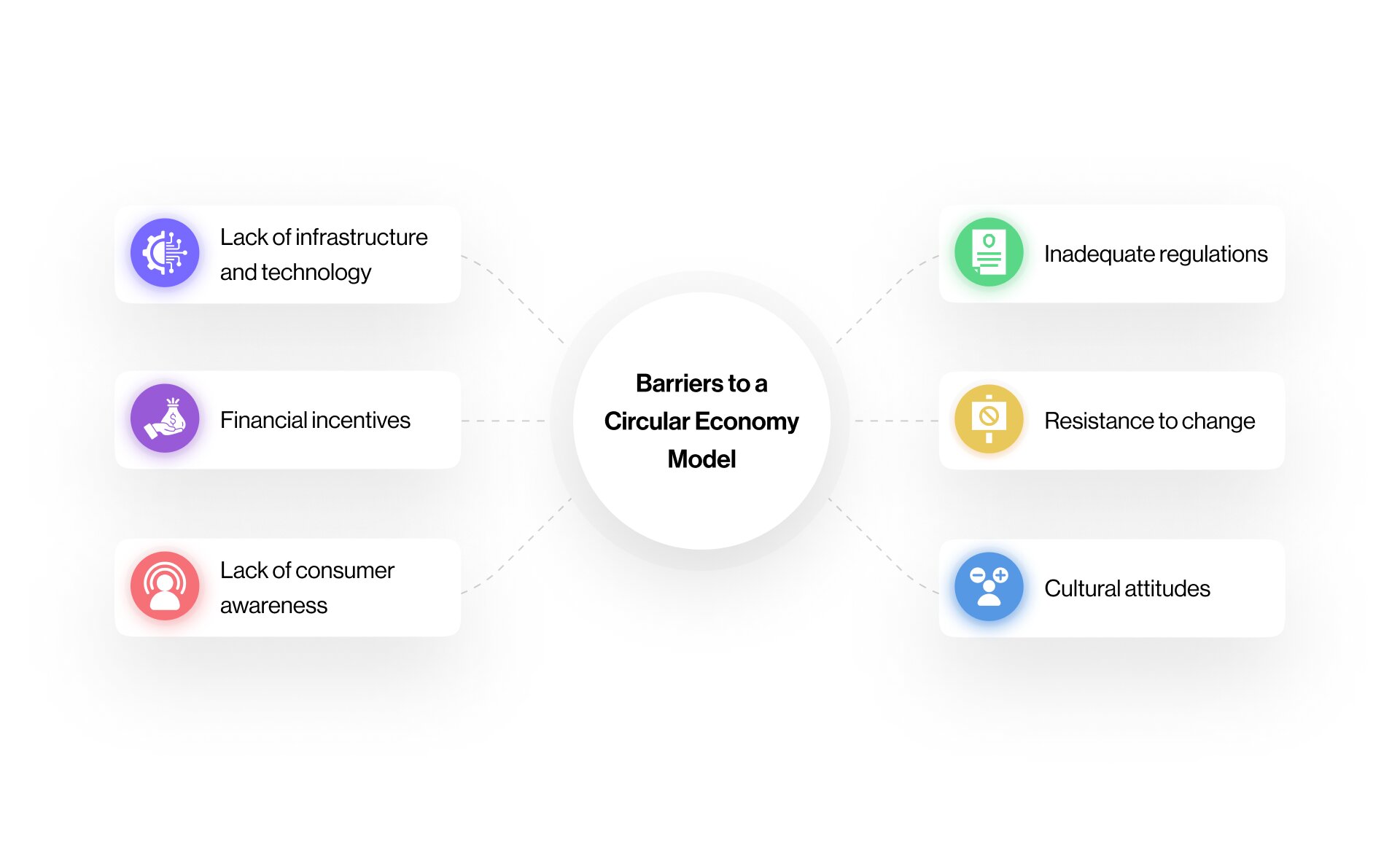Living sustainably is not just a choice but a necessity. Our planet is under constant examination, and it will take the collective efforts of corporations, organizations, and individuals to restore it to its former health. This is no easy task, but a new approach can assist us in reducing our resource consumption and maximizing their value. This approach is presented by the circular economy model. This model is grounded in the well-known principles of reduce, reuse, and recycle to conserve resources and minimize waste.
Blockchain technology has the potential to significantly enhance its impact on the environment and society. Blockchain aids the transition to a more sustainable, circular economy by providing a secure, decentralized platform for tracking transactions and information. The combination of these two elements can result in a world based on trust, transparency, traceability, and sustainability. In this article, we delve deeper to uncover the forces that have the potential to establish a circular economy based on a decentralized, transparent system. Continue reading:
- What is a Circular Economy Model?
- Barriers to a Circular Economy Model
- How can Blockchain help Sustainability?
- Obstacles to Adopting Blockchain
What is a Circular Economy Model?
The circular economy model is an alternative economic system that aims to keep resources in use for as long as possible, reducing waste and minimizing the depletion of finite resources. The circular economy is based on reducing, reusing, and recycling resources. Unlike the traditional linear take-make-waste model, where resources are extracted, used briefly, and discarded, the circular economy creates a closed loop of material flows, where waste is minimized, and resources are conserved. In a circular economy model, resources are kept in use for as long as possible, extracting the maximum value from each item before recycling or repurposing.
This can be achieved by developing new business models that incentivize sustainable behavior and encourage the use of recycled materials. The circular economy has the potential to create a more sustainable future where waste is reduced, resources are conserved, and economic growth is decoupled from the depletion of finite resources.
However, there are a few obstacles to its implementation.
Barriers to a Circular Economy Model
A circular economy seems like an excellent strategy for getting sustainability on track and making the most efficient use of our resources. However, even the best-laid plans encounter some obstacles when it comes to practical implementation. Some of these obstacles are listed below:
Lack of infrastructure and technology
A lack of infrastructure and technology can make it difficult to implement a circular economy. This includes systems for collecting, processing, and recycling waste and technologies for reusing materials. In many regions, the necessary systems and technologies are either underdeveloped or non-existent, making it difficult to support a circular economy. This can be a setback that requires attention from multiple organizations and higher-level authorities.
Financial incentives
Financial incentives play a significant role in driving change. However, many current financial incentives encourage the use of finite resources and waste disposal rather than recycling and reusing materials. This makes it difficult to transition to a circular economy, as it requires a shift in financial incentives towards more sustainable practices. The existing financial incentive systems may have their benefits. But they require restructuring to achieve a smoother shift to a circular economy model.
Lack of consumer awareness
Consumers are often unaware of the impact of their purchasing decisions on the environment and the circular economy. This lack of awareness makes it difficult to drive change towards a more sustainable future, as consumers may not understand the need for, or the benefits of, more sustainable practices. Transparent information about product sources and raw materials can help consumers make better purchasing decisions.

Post Disclaimer
The information provided in our posts or blogs are for educational and informative purposes only. We do not guarantee the accuracy, completeness or suitability of the information. We do not provide financial or investment advice. Readers should always seek professional advice before making any financial or investment decisions based on the information provided in our content. We will not be held responsible for any losses, damages or consequences that may arise from relying on the information provided in our content.
Post Disclaimer
The information provided in our posts or blogs are for educational and informative purposes only. We do not guarantee the accuracy, completeness or suitability of the information. We do not provide financial or investment advice. Readers should always seek professional advice before making any financial or investment decisions based on the information provided in our content. We will not be held responsible for any losses, damages or consequences that may arise from relying on the information provided in our content.



